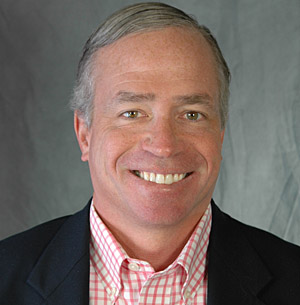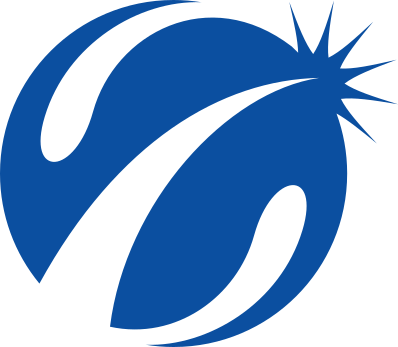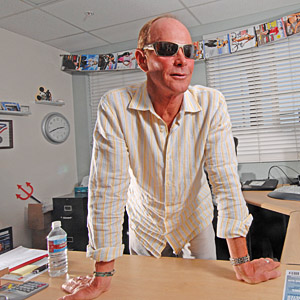Q&A with Andy Hersam

With the departure of John Duke, long-time Triathlete publisher and Competitor Group Incorporated Senior Vice-President of Print Media, former Runner’s World Media Group Publisher Andy Hersam took over Duke’s responsibilities this week. Hersam, a runner, has big shoes to fill as Duke, a pioneer triathlete and triathlon entrepreneur, has been a major player in the sport of triathlon almost from its inception. Hersam will assume responsibility for all four CGI print titles. While Velo News and Competitor will continue to operate under current regimes as before, Hersam will take over Duke’s active role overseeing Triathlete and Inside Triathlon magazines, working with IT editor TJ Murphy and Triathlete editor Brad Culp.
Prior to arriving last August at CGI, Hersam worked as Vice President and Publishing Director of Runner’s World Media Group at Rodale for several years, then in 2007 switched to become Executive Vice President /Chief Revenue officer of Westwood One Radio Networks. After a year at Westwood, CGI recruited him and he started in July 2008.
Hersam will assume direct oversight of CGI’s print, digital, and sponsorship sales for all of CGI’s media and event properties. In his expanded duties, Hersam will also add the day to day responsibilities previously handled by John Duke.
Slowtwitch: What did you do at Runners World?
Andy Hersam: I was Publishing Director of the Runner’s World Media Group, responsible for Runner’s World and Running Times magazines, runnersworld.com and the Runner’s World Race and Event Series.
ST: When did you start at CGI and what is your title and responsibilities?
Andy: Since August I have been executive vice president of media for CGI. I oversee all of the media properties for Competitor Group LLC – Triathlete, Inside Triathlon, Competitor and Velo News. The only thing changed really is my role has been expanded. I have picked up responsibility previously managed by Duke, the day to day management of print properties. Our digital properties – under the umbrella of competitor.com — are were run by CGI CEO Peter Engelhart, and are now my responsibility.
ST: CGI parent company Falconhead picked up four magazines just at the point when the economy was tanking and magazines and newspapers were experiencing a severe downward slide in advertising. How did your titles fare?
Andy: Last year, all four CGI titles had pretty remarkable success during a tough time for the economy and magazines. We are a privately held company, so I won’t comment on the numbers except to say that all of our media properties are very healthy.
ST: Perhaps the biggest success story, the longest shot in CGI’s portfolio, was Inside Triathlon. Who was responsible for the idea?
Andy: The concept of Inside Triathlon was suggested by TJ Murphy, and it has become a very profitable magazine in one year. While Competitor and Velo News have succeeded under their own management, the two triathlon titles presented a unique challenge. When we acquired IT, the question was, what do we do with them both — given we already had Triathlete in our portfolio? Do we do what say Times Mirror did when they acquired Skiing and Ski? They were like Coke and Pepsi – not that much difference. They were too much alike and the combination didn’t work. We believe that the sport and community of triathlon is large enough for two quality publications. And the community deserves two world class titles.
ST: So what was the strategy?
Andy: The strategy was to re-launch Inside Triathlon as a magazine for the front of the pack. People who when they toed the line had a chance for podium. It was a smaller, more selective group. We decided the best way to reach this group was with a magazine to be more writerly, more narrative focused and more luxurious in terms of size, paper stock, layout and photographic size and quality.
ST: Why?
Andy: Core triathletes do not need service editorial. Perhaps they want to see the latest gear, but perhaps not how to eat, how to train. That is already there in Triathlete. What Inside Triathlon does now is really cool. It’s a magazine where tri geeks can immerse themselves in the lives of the cutting edge players and in the minds of the innovators of the sport. We want the magazine to be able to play out very long stories that go deep and give those stories the proper space and number of great photos.
ST: If you cut too narrow a niche, IT might have gone down like the Titanic. What else did it offer?
Andy: The interesting thing about making IT focused on storytelling and great photography and layout is that we are reaching more than the front of the pack. We know that anybody who picks a magazine is a reader. And what reader doesn’t love a love a good story? The goal is to pick up people who will be intrigued and want to take up the sport.
ST: John Duke supported this idea from the beginning.
Andy: John was behind that as well. Because TJ obviously reported to him, John collaborated with TJ’s baby. I was not there when they acquired the title and was not involved in the day to day development and execution. You’d have to speak to John and TJ about that. But I know John gave TJ free rein. TJ was brave and ambitious. He stepped aside as editor of the more established Triathlete and jumped at the opportunity to remake the title. He took a chance. Now, if you look at the IT of a couple years ago — today it is a radically different product.
ST: Why did it work?
Andy: I think it has a correlation with some of the great magazines. I worked at Sports Illustrated and I love long form journalism. In terms of triathlon, that approach can do a lot to motivate, inspire and bring lot of people into the sport.
ST: Some say that triathlon’s big surge in popularity may have plateaued. What will you do about that?
Andy: Our responsibility at Triathlete and Inside Triathlon is like a lot of what you do at Slowtwitch. Create a bigger welcome mat to get more people in the sport and keep the lore alive. My favorite writer is Gary Smith at Sports Illustrated, who writes the long, in-depth, eloquent pieces. Gary Smith was worth every penny we paid him.
ST: So why did John Duke leave?
Andy: The fact was he was not fired. He was offered another job with Competitor Group. We approached John with an opportunity to change his role and launch what we know will be a very profitable new venture for CGI, developing the Competitor Sprint Triathlon Series. His pay would have been excellent, but he declined.
ST: Why move Duke when he had such success with Triathlete?
Andy: As publishers we felt that he was best suited to head up this new effort. I have 22 years of experience with very successful magazines and felt that John’s talents could better serve CGI elsewhere. We felt that he was well connected with all the influential persons in the sport and thus he would be the best person to start a very successful triathlon series.
ST: So with both triathlon titles making money in tough times, what is left to do?
Andy: IT and Triathlete are doing well in a business sense. They are all making money. But I know that Inside and Triathlete have not seen their best days yet. My job is to lead the team, spearheaded by TJ, to grow each title and in turn the sport.
ST: What are John Duke’s greatest accomplishments?
Andy: John has many great accomplishments. John grew circulation and revenues substantially in the last 10 years. As triathlon has grown, so has Triathlete magazine.
ST: John pulled a Lazarus and brought Triathlete back from the dead. In 1997 it was on its last legs, operated by remote control by Jean Claude Garot from Belgium on a shoestring budget. In that year, the La Jolla Holding Group, headed by financier Mitch Thrower initiated a leveraged buyout of the title and hired John Duke to run it. Ten years after Duke took over as publisher, the magazine had 200-plus pages and a dominant market share. So, what has he done at CGI?
Andy: In his two years at CGI, we had joined a number of different businesses with very different cultures together under the CGI umbrella. They were competing cultures – guys from Inside were used to fighting against Triathlete. John had to get them all on the same page and marching in the right direction and play well together in the sandbox. That is not for the faint of heart. It is a great task any time companies merge and John did it quite well.
ST: Why did you leave Runners World?
Andy: CGI starting out with its roster of magazines, the Rock and Roll Marathon Series, Muddy Buddy and now our Tri series is a far greater opportunity than we had at Runners World. In essence, CGI stole a page out of our playbook. When I took over at Runners World, we offered advertisers and marketers 360-degree marketing opportunities. What CGI does offers a far larger opportunity and impact as we encompass all of the endurance sports landscape and with it all of the finest marketing touch points.
ST: What do you bring from your track record at Runners World that translates to CGI?
Andy: At RW, I helped bring about the purchase of Running Times as a distinct publication from Runners World. In doing so, and in evolutionary changes we made at Runners World, we created a larger welcome mat for the sport of running and with opened the door for a far larger readership. Before, the mag had a style of editing — a secret handshake so to speak – where if you were not a flat-out runner you would not see yourself in there.
ST: What about the business synergy CGI trumpeted when you combined the Muddy Buddy and Rock and Roll events with multisport magazines?
Andy: We also wanted to utilize events as a means to provide advertiser with full 360-degree marketing solutions. Peter Englehart had the wisdom to acquire several great titles and put them, under one roof and combine them with Muddy Buddy and Rock and Roll running events. Then we could go into any ad agency or small advertiser and give them the opportunity to market to them at point of event or in the pages of a great mag.
ST: Are you encouraging your editors to do stories on your events?
Andy: Absolutely not. The editorial content of the magazines cannot be promotional because visitors of the websites and the readers are too smart. We can advertise events and promote them and run a page of ads or use the website for web ads. But in no way will the fact that we own and promote events impact editorial decisions. People will smell that in a nanosecond.





Start the discussion at forum.slowtwitch.com